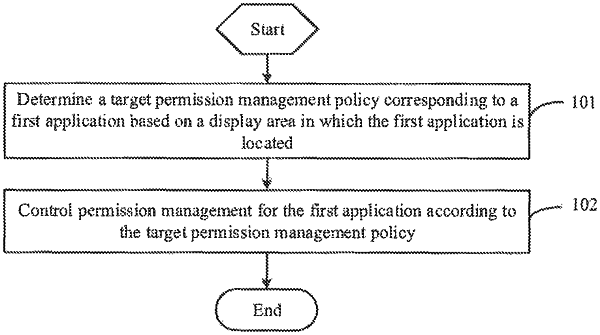| CPC G06F 21/6281 (2013.01) [G06F 21/10 (2013.01); G06F 21/31 (2013.01); G06F 21/577 (2013.01); G06F 2221/032 (2013.01)] | 15 Claims |

|
1. A permission management method, applied to a terminal device, wherein the terminal device comprises a first display area and a second display area, and the method comprises:
determining, by the terminal device in a case that a first application is in an installing state, whether the first application uses a first preset permission management policy or a second preset permission management policy in response to a user's selection operation;
determining, by the terminal device when the terminal device determines that the first application uses the first preset permission management policy, a target permission management policy corresponding to a first application based on a display area in which the first application is located; and
controlling, by the terminal device, permission management for the first application according to the target permission management policy;
wherein the first preset permission management policy is a permission management policy based on a display area, the second preset permission management policy is a permission management policy unassociated with a display area, and the first preset permission management policy comprises a first permission management policy and a second permission management policy;
in a case that the display area in which the first application is located is the first display area, the terminal device invokes the first permission management policy corresponding to the first display area, and determines the first permission management policy as the target permission management policy;
in a case that the display area in which the first application is located is the second display area, the terminal device invokes the second permission management policy corresponding to the second display area, and determines the second permission management policy as the target permission management policy.
|